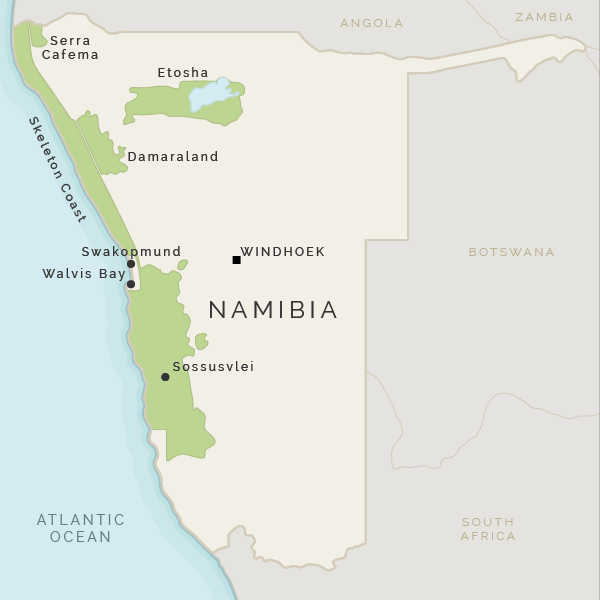Although there is a great variety of landscapes in Namibia, in comparison to many other African countries, Namibia is never especially wet as it is mostly desert. It has two main seasons, the dry season (May to October) and a rainy season (November to April). It is however, an arid country and during the rainy season it only receives a fraction of the rainfall than its neighbours.
The Best Time to Visit Namibia
Although most of Namibia is desert, its southerly location and elevation above sea level creates a pleasant climate. The best time to visit Namibia is during the winter months, which is the British summer (May to October). During this season the weather is not too hot and there is little chance of rain. The nights can become cold with even a touch of frost but during the day, the sun shines brightly and warm temperature envelope all. The rainy season usually starts in mid-November.
The summer months (British winter, November to April), can be very hot and humid and there is a reasonable chance of rain. Namibia has one rainy season which begins in mid-November and runs through to mid-March. This is the time of year when vegetation is greenest and the migratory birds return. It is also a great time to see new-born animals.
The Best Time to go on Safari in Namibia
Although busier with visitors, the months June, July and August provide the best opportunities to view game. The lack of rainfall in these months result in lower and thinner vegetation. Water is therefore only found in concentrated areas which attracts congregations of animals in their dozens. This provides excellent opportunities for multiple species interaction and sightings. During the rainy season, the white sandy desert is transformed into a lawn of greenery. The vegetation becomes thicker and more dense whilst water is more accessible to the animals, this results in them becoming widespread and harder to find.

